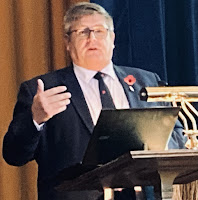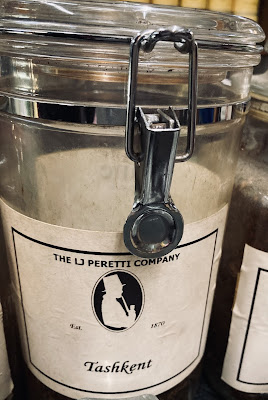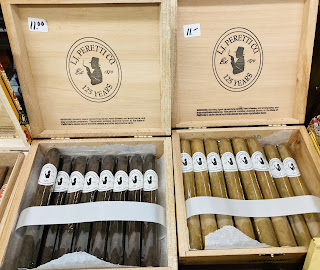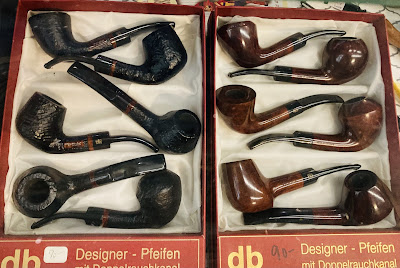 |
| Title page. |
This edition of The Magpie Mason is a long one. I share with you a chapter from The Evolution of Freemasonry: An Authentic Story of Freemasonry, Profusely Illustrated with Portraits of Distinguished Freemasons and Views of Memorable Relics and Places of Singular Masonic Interest by Delmar Duane Darrah in 1920. This chapter reflects on the convivial traditions of smoking and drinking in lodge during Freemasonry’s early years. Some of it is a little humorous; there are a few mentions of New York Masonry; and it concludes on a happy, hopeful note. I added a few photos and other graphics. Enjoy.
The Bowl and the Pipe
In his indulgences, man has ever sought the bowl and the pipe. The early Masonic fathers, like the balance of the human race, had their weaknesses. An examination of their customs and habits shows them to have been devotees of the banquet board and the bar, as well as generous consumers of the weed.
The first Masonic lodges held their meetings in a tavern where they had ready access to the tap room. It was not so much the absence of proper places of meeting which caused the primitive lodges to assemble in the hostelry of the town, but it was because they could find in the tavern that which contributed to the gastronomic characteristics of the society for conviviality was the dominant feature of those early Masons and the knife, fork, and corkscrew were to them greater in their symbolism than the plumb, square, and level.
 |
| At the GWMNM. |
Let it be understood that the hour of refreshment was not a mere company of Masons drinking, but the lodge room itself became nothing more or less than a barroom. One of the important pieces of furniture in the early lodge was what was known as the Mason’s glass, or drinking cup, which had a very thick bottom. Its purpose was to permit each brother to drink the other’s health, the heavy bottom enabling the drinkers to pound the table. In the revelry, the Master and Wardens were especially favored with long stemmed glasses called constables, which were capable of holding a quart. The conversation at these festive boards would not bear repetition in polite society, so strongly was it tinctured with profanity, vulgarity, and coarse jests. Dr. [George] Oliver relates that in lecturing a lodge meeting, the volume of smoke arose in the fury of a burning prairie and his address was frequently interrupted by calls to the barkeep for more beer and wine.
 |
| Poster at L.J. Peretti in Boston. |
Such practices were not confined solely to the lodge. They affected the Grand Body as well, for in 1775, a rule was passed by the Grand Lodge of England that no one should smoke tobacco until the Grand Lodge closed. This rule was evidently ignored, for in 1815, it was revived and reaffirmed.
However shocking these statements may be to the Mason of today, it must not be forgotten that his brethren of two hundred years ago were simply doing whatever everybody else did, and their conduct was but a reflection of the social conditions of those times. The dominant sin of the eighteenth century was that of over indulgence. Dr. Emmons, an eminent divine, preached a sermon in 1719 in which he declared that multitudes might be seen every where wallowing in drunkenness.
 |
| On display at the GWMNM. |
Even as late as one hundred and twenty-five years ago, drunkenness was a common thing. Nearly everybody drank—ministers drank, deacons drank, and laymen drank, while a church ordination service always had more toddy than prayer. Intemperance was found not only in public houses and in public places, but in private families as well. At an ordination service held in Boston about one hundred years ago, the incidental charges connected with the affair included three pails of bitters, eighteen pails of punch, eleven pails of wine, five mugs of flip and three pails of toddy. It is apparent that the carrying capacity of the divines of that period would make them eligible for membership in the most approved city club of today. As late as sixty or seventy years ago, people raised their barns with whiskey, christened their children with port wine, went to funerals full of toddy, came home and drank more.
The lodge records of the earliest periods make frequent mention of the hour of refreshment. Brother D. Murray Lyon, the Scottish historian, declares the banquet to have been recognized as an institution by the Masonic Craft by reason of an ordinance proclaimed in the year 1599. One reason assigned for the decline of the old operative societies was the failure to hold the annual feasts and the restoration of these customs by those responsible for the revival of Freemasonry had much to do with its future success. The reception of a new candidate appears from the old records to have been generally accompanied by a dinner. Sometimes the bill was paid from the general fund, and, at others, by each participant assuming his share of the cost. When the Grand Lodge was organized at York in 1725, among the rules adopted were the following:
Every first Wednesday in the month a lodge shall be held at the house of a brother according as their turn shall fall out.
 |
| Punchbowl c. 1800 at the GWMNM. |
The bowl shall be filled at the monthly lodge with punch once; ale, bread, cheese, and tobacco in common, but if anything more shall be called for by any brother, either for eating or drinking, that brother so calling shall pay for it himself, besides his club.
The Master or Deputy shall be obliged to call for a bill exactly at ten o’clock if they meet in the evening and discharge it.
In the records of the Witham Lodge, to which reference has already been made, is a bylaw defining the duties of officers and the penalty for non-compliance, a “bottle of wine to be drunk by the brethren after the lodge is closed, to make them some past amends.”
 |
| At Warren Lodge 32 a few years ago. |
Dr. Oliver, in referring to the time when he served as Master of the lodge in the early part of the nineteenth century, spoke of the refreshments as being abstemious and moderate. The amount for each brother being strictly limited to three small glasses of punch, and this was seldom exceeded except at the annual festival when a pint of wine was allowed. He says the brethren were disposed to increase the allowance but this was forbidden and no lodge addicted to intemperance could be found.
In their revelry, the brethren made a practice of giving to the furniture of the room fanciful titles and to impose a fine of a bottle of wine for calling any article by its proper name. The table was called a workshop; the chairs, stalls; the candles, stars; the bottles, barrels; the glasses, cannons; and the liquor, powder. If person asked “How do you do?” the party challenged, if a Mason, would drink to the other’s health, and when in a mixed company, a member of the Craft who desired to make known his affiliation with the society would, after drinking, turn his glass down.
Lawrence Dermott, in writing concerning the Bacchanalian feasts of the Craft says: “It was thought expedient to abolish the old custom of studying geometry in the lodge and some of the younger brethren made it appear that a good knife and fork, in the hands of a dextrous brother, over proper materials, would give greater satisfaction and add more to the conviviality of the lodge than the best scale and compasses in Europe.”
It is not to be supposed that these assemblages of Masons were wholly for the purpose of satisfying the appetite. The minutes of Witham Lodge, at Lincoln, of the date January 2, 1732, record: “Bro. Every recommended Mr. Stephen Harrison, of the City of London, music-master, as a proper person to be a member of this society, and proposed to give a guinea towards the charges of his initiation; Sir Cecil Wray proposed to give another guinea; Sir Christopher Hales, half a guinea, to which Sir Cecil Wray added another guinea; and in regard that Mr. Harrison might be useful and entertaining to the society, the lodge agreed to admit him for the sum of £3/13/6” or about $17.00 in our money. This goes to prove that our ancient brethren very early recognized music as a liberal art.
Punning was a favorite amusement and was intended to test the mental capacity of the participants. Another pastime was called crambo and required ready wit and keen perception to pass it freely around the board. It consisted in the Master reciting a line of poetry or proposing a toast to which every brother present was expected to improvise a line, and upon his failure to produce a corresponding rhyme he was penalized by being required to purchase an extra round of drinks for the company.
These carousals did not find favor with the entire membership of the Craft. Some of the brothers were very sensitive over the matter and considered that lodges meeting at taverns were guilty of an impropriety. Accordingly in 1778 a proposition was broached providing for the raising of a sum of money to be used in the construction of a Masonic Hall. One of the arguments offered being that the meetings of the fraternity in public houses gave it more the air of a bacchanalian society rather than one of gravity and wisdom.
 |
| Humidor on display at the GWMNM. |
It must not be understood that the practices under discussion were confined solely to our English cousins. The records of the Grand Lodge of New York disclose the information that in 1772, Master’s Lodge, held at Albany, passed an order that “the Tiler be furnished 12 pint bowls for which he shall be accountable,” and anyone breaking them was to forward 8 pence for each one destroyed. Eleven years later, the Treasurer was ordered to procure for the use of the lodge one quarter cask of Lisbon or Sherry wine, five gallons of spirits, two loaves of sugar and two dozen glasses. Four years later a rule was passed that no brother be allowed to drink more than one-half pint of wine each lodge night and that the stewards be instructed to see that the rule was fully complied with.
 |
| Hoffman 412 in New York. |
An evidence of what the conduct of Masons one hundred and fifty years ago may have been is suggested by the first article of a bylaw adopted May 22, 1771, by Solomon Lodge, formed at Poughkeepsie, New York: “In open lodge without order or decency, a dissolution must be the consequence. Therefore, at the third stroke of the Master’s hammer, a profound silence shall be observed, and if any brother curses, swears, or says anything irreligious, obscene, or ludicrous; offers to lay any wagers; interrupts another brother who is speaking to the Master; or hisses at what he is or has been doing; holds private committees; appears unclothed or with his hat on; or smokes tobacco in open lodge; or is disguised in liquor during lodge hours, such offending brother, shall for the first offense, be gently reproved and admonished by the Master; for the second offense, shall be fined one shilling; for the third offense, be fined two shillings; and for the fourth offense, to be immediately expelled from the lodge, and never be admitted again as a member or visitor unless he be balloted for and received in like manner with a strange brother, paying all fines due as per these bylaws; and eight shillings as a new admission fee if he chooses to be reinstated as a member.”
St. John’s Lodge No. 2, of Connecticut, which was organized February 26, 1754, adopted a bylaw providing that any brother guilty of profanity during lodge hours was to be fined one shilling; and any brother so void of shame as to disguise himself in liquor was to be fined two shillings, should he come to lodge in that condition, and be dismissed for the night. But whatever may have been the customs and the practices of those fathers in Masonry in the early and formulative periods of the society there were simply reflected in the lodges the same customs and habits that characterized people generally.
It stands to the everlasting credit of Masonry that it has outlived its ancestors and their environment. It has been a pioneer in the movement toward temperance, and today drunkenness is a Masonic misdemeanor punished by proper discipline. The habit of patronizing barrooms is not in accordance with Masonic ethics. Profanity and coarse jests are seldom heard in a place of meeting. Gentlemanly conduct, intellectuality, culture, and high morality, even to religious severity, are apparent everywhere. Thus by a long process of evolution, Freemasonry has passed from a convivial association to an institution of strong moral force seeking the elevation of the human mind and the cultivation of the social virtues.


















































































































